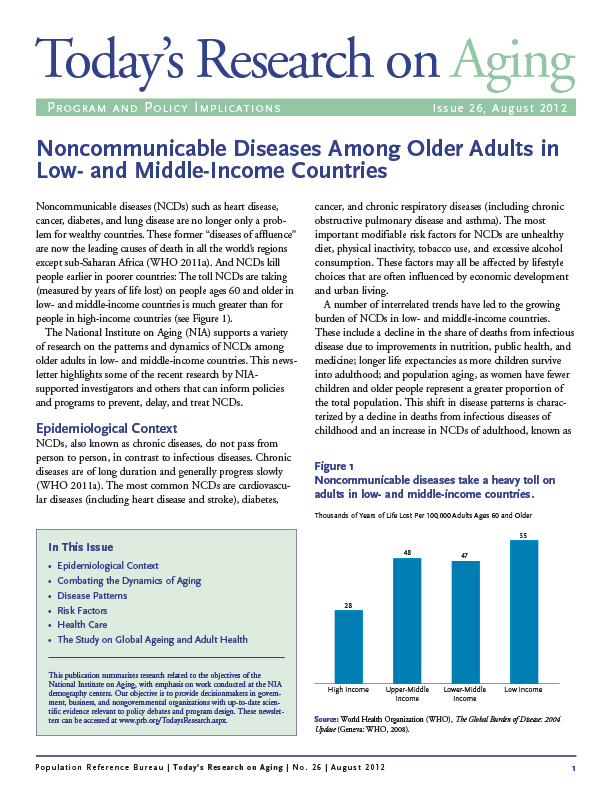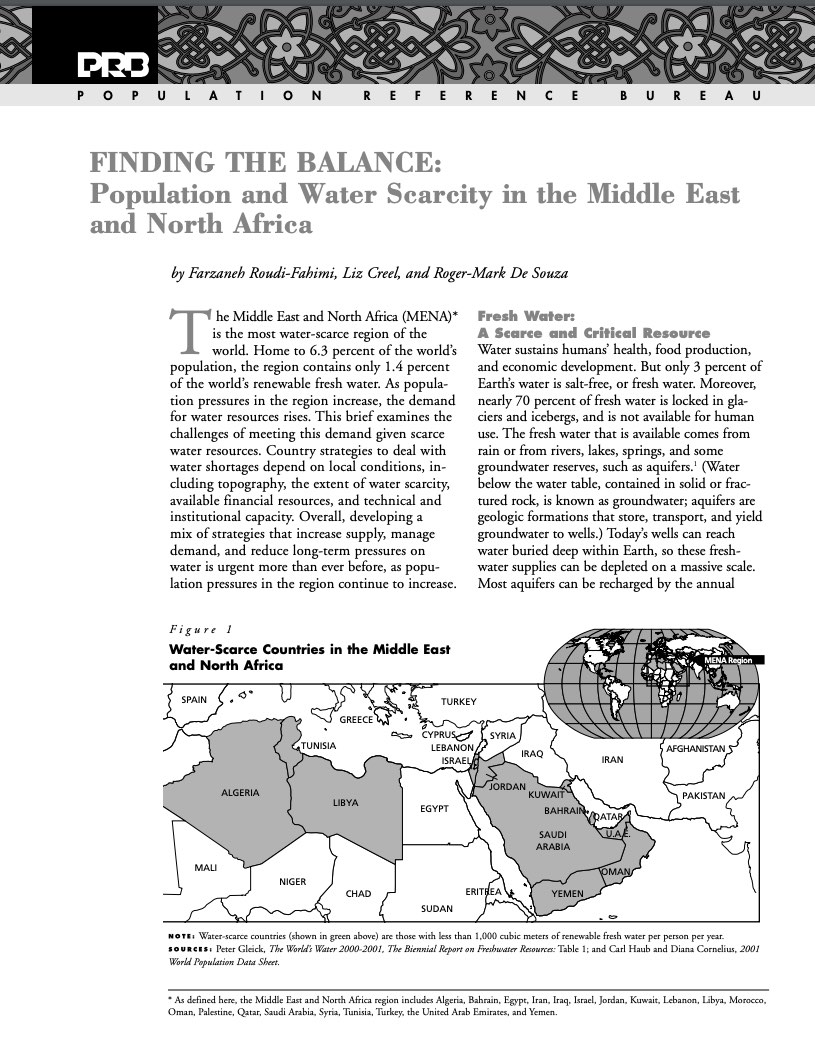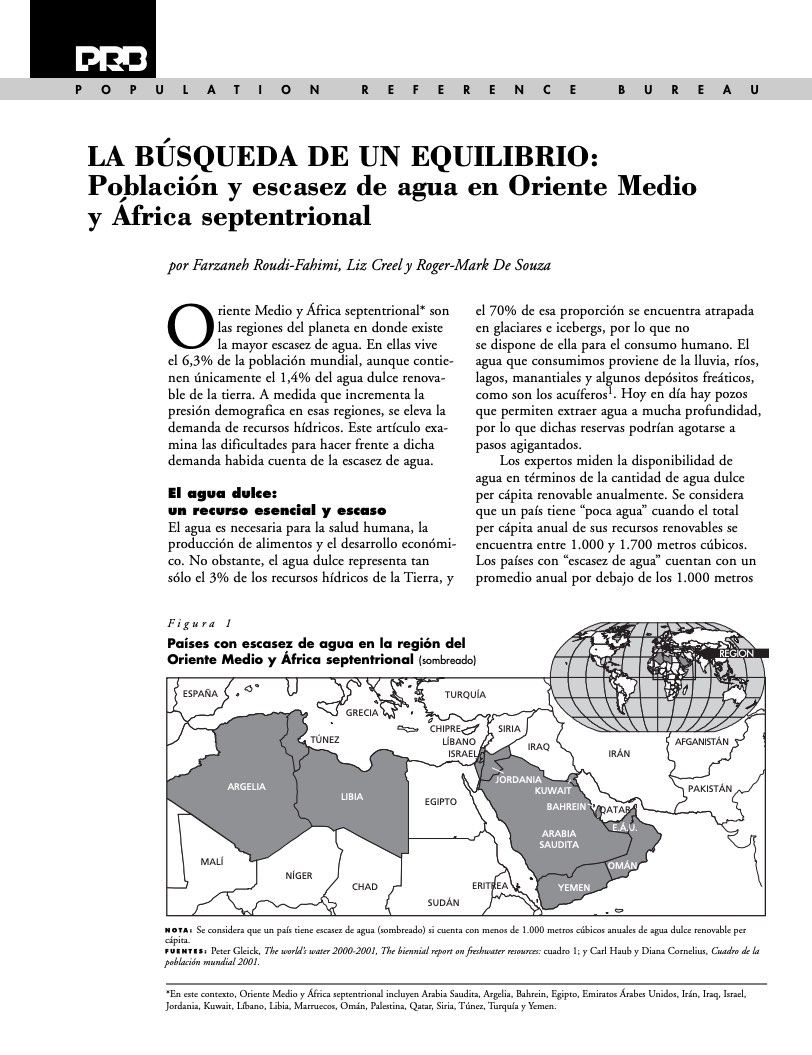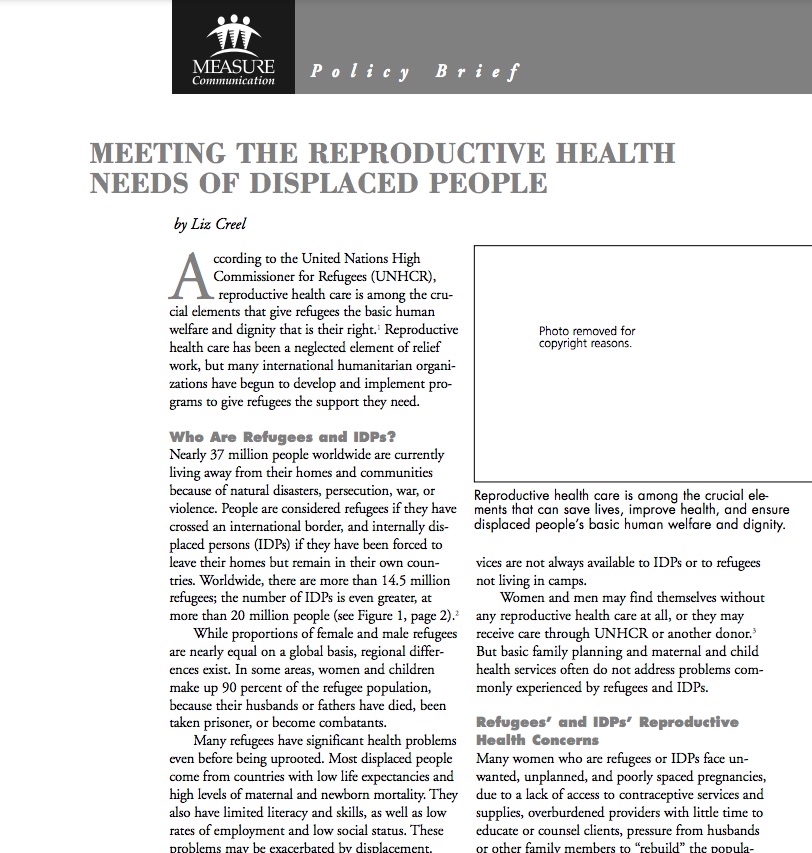Project: Demography and Economics of Aging and Alzheimer’s Disease
Today’s Research on Aging, Issue 26: Noncommunicable Diseases Among Older Adults in Low- and Middle-Income Countries
(2012) Noncommunicable diseases (NCDs) such as heart disease, cancer, diabetes, and lung disease are no longer only a problem for wealthy countries. These former “diseases of affluence” are now the leading causes of death in all the world’s regions except sub-Saharan Africa (WHO 2011a.)





